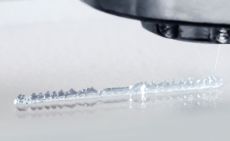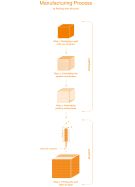Press Photos
WACKER provides you with free photos for editorial purposes. Please send us a screenshot or a copy of the printed publication. Use the selection box to find photos of the Group and its products, as well as their applications. Click the desired category to receive an overview with thumbnails. You can then order the photos you need via e-mail.
Category
Reset perimeterClick the desired category to receive an overview with thumbnails.
You can then order the photos you need via e-mail.
Fig. 04a – d: Picture_Series_3D_Printing
The WACKER 3D process works like an ink-jet printer: the nozzle deposits a drop of silicone precisely at the point determined by the computer program (images 4a and 4b), generating a molded three-dimensional silicone part layer by layer from the virtual drawing (images 4c and 4d).
Order photoFig. 04a – d: Picture_Series_3D_Printing
The WACKER 3D process works like an ink-jet printer: the nozzle deposits a drop of silicone precisely at the point determined by the computer program (images 4a and 4b), generating a molded three-dimensional silicone part layer by layer from the virtual drawing (images 4c and 4d).
Order photoFig. 03: 3D_Printing_Process
Diagram of the WACKER 3D process. The first step is to design the part with a CAD program. After the spatial coordinates have been calculated (step 2), the printing instructions are generated (step 3). Then, the printer robot follows the instructions exactly and prints the silicone layers dot by dot (step 4). In this way, the virtual CAD model is transformed into a three-dimensional silicone part, layer by layer.
Order photoFig. 02: 3D_Silicones_Object
A silicone part made by 3D printing. WACKER, the Munich-based chemical group, has developed a process that enables the printing of three-dimensional silicone objects for the first time. The process is ideal for numerous industrial sectors. It opens up completely new opportunities for developing products in the automotive, medical, household-appliance and lighting industries. Now prototypes with complex geometries can be produced quickly and flexibly, without expensive tools. In the same way, it is possible to produce small series and spare parts that have to be continuously modified to meet changing requirements.
Order photoFig. 01: 3D_Silicones_Printing
Current 3D printing technologies use glass, metal, plastic, synthetic resin or ceramics as starting materials. What was missing was a process for silicone elastomers – that is, until now. WACKER has developed a 3D technology that makes it possible to build three-dimensional silicone objects for the first time.
Order photo


